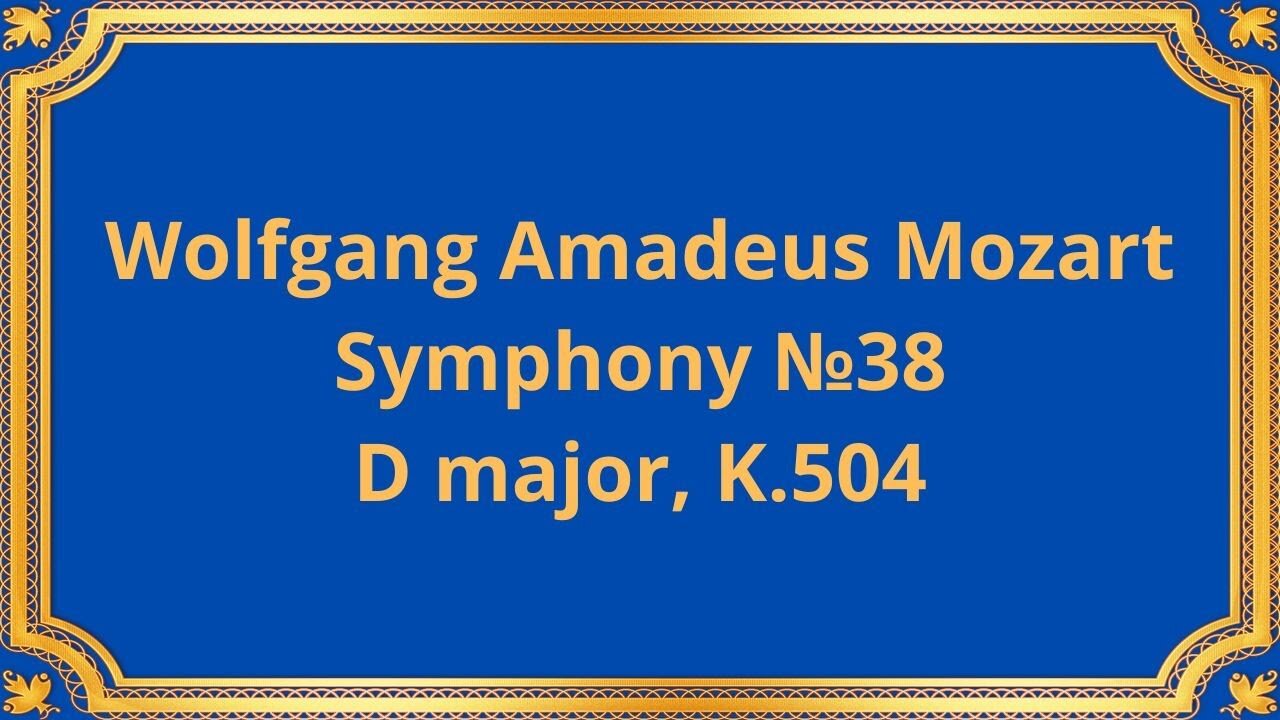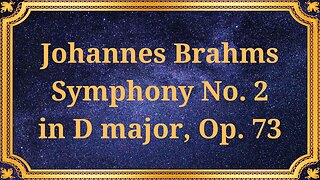Premium Only Content

Wolfgang Amadeus Mozart Symphony №38 D major, K.504
#Mozart#Chamber_music#Classical_music#Symphony#Musical_composition
Wolfgang Amadeus Mozart is one of the most renowned and celebrated composers of all time, with his works still being studied and performed to this day. One of his most famous compositions is Symphony No. 38 in D major, K.504, also known as the "Prague Symphony."
Symphony No. 38 was composed by Mozart in 1786, during a time of great creative output. This symphony was specifically commissioned by the citizens of Prague, who were huge fans of Mozart's music. The first performance of the symphony took place in Prague on January 19, 1787, and it was an immediate success.
The Prague Symphony was unlike any of Mozart's previous symphonies. It was longer, more complex, and included a larger orchestra. The citizens of Prague loved the symphony so much that they commissioned Mozart to compose another opera, which became The Marriage of Figaro.
Symphony No. 38 is composed of four movements: Adagio - Allegro, Andante, Finale: Presto, and Allegro. The first movement, Adagio - Allegro, starts off slowly and then quickly picks up speed, showcasing Mozart's use of dynamic contrast. The second movement, Andante, is much slower and more peaceful, allowing for a moment of relaxation before the final two movements.
The Finale: Presto is a high-energy movement that features a lively melody and showcases the virtuosity of the orchestra. The final movement, Allegro, brings the symphony to a rousing conclusion, with a fast-paced tempo and a sense of joy and celebration.
Mozart's use of instrumentation in Symphony No. 38 is notable. The symphony includes an expanded orchestra, with the addition of clarinets, trumpets, and timpani. This allowed Mozart to experiment with new sounds and textures, creating a more complex and sophisticated composition.
The Prague Symphony is often considered one of Mozart's greatest works and is celebrated for its innovative use of orchestration and dynamic contrast. It is a shining example of the Classical period of music, which emphasized balance, clarity, and elegance.
Wolfgang Amadeus Mozart's Symphony No. 38 in D major, K.504, is a masterpiece of the Classical period of music.
You have the opportunity to support the channel
https://www.donationalerts.com/r/radsiaral
-
 36:10
36:10
Classical music_Music Inspiration
16 days agoJohannes Brahms Symphony No. 2 in D major, Op. 73
401 -

TimcastIRL
3 hours agoFBI & GOP EXPOSE "Coup" Against TRUMP, Democrat Operative FELONIES Covered Up | Timcast IRL
179K28 -
 LIVE
LIVE
Man in America
10 hours ago5G + mRNA = Remote-Controlled Humanity w/ Dr. Henry Ealy
1,657 watching -
 LIVE
LIVE
Geeks + Gamers
2 hours agoGEEKS + GAMERS PLAY- MARIO KART!! SWITCH 2 HYPE!
347 watching -
 DVR
DVR
Badlands Media
21 hours agoAltered State Ep. 30
39.5K5 -
 LIVE
LIVE
Meisters of Madness
6 hours agoElden Ring - Erdtree Wrap-up
249 watching -
 9:22:21
9:22:21
Bitcoin Magazine
2 days agoThe Bitcoin Conference 2025 | Day 2 Livestream
157K21 -
 LIVE
LIVE
Eternal_Spartan
1 hour agoLive - Eternal_Spartan | Doom: The Dark Ages | Come Join the Best Rumble Community There Is!!
99 watching -
 9:27:07
9:27:07
Dr Disrespect
11 hours ago🔴LIVE - DR DISRESPECT - BATTLEFRONT 2 - TRIPLE XP MADNESS
111K13 -
 1:24:28
1:24:28
Joker Effect
1 hour agoHUGE ANNOUNCEMENT come listen
10.3K2